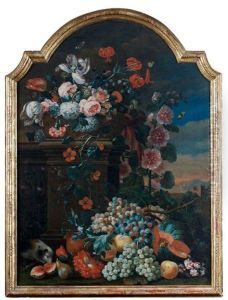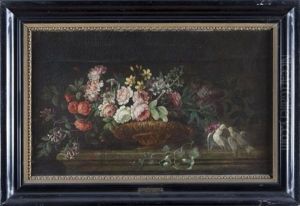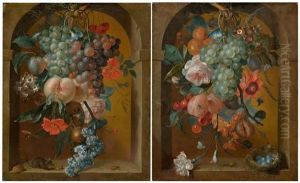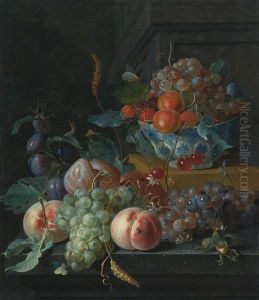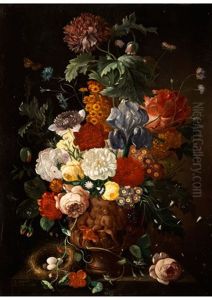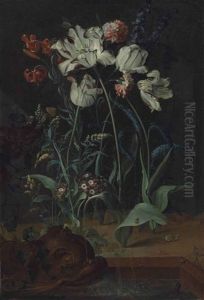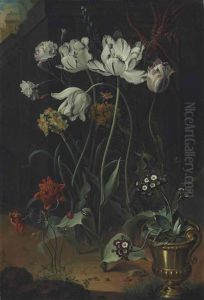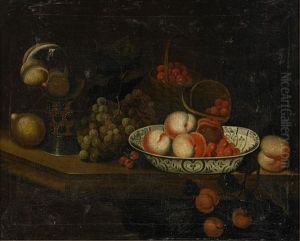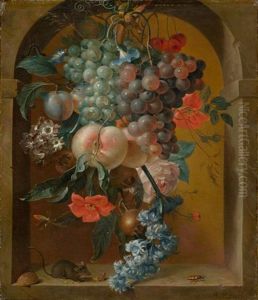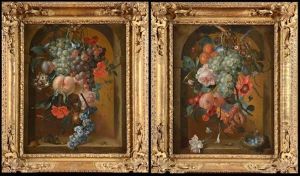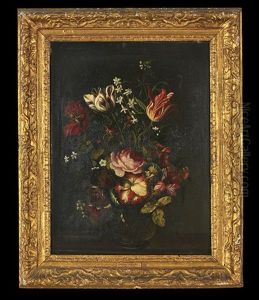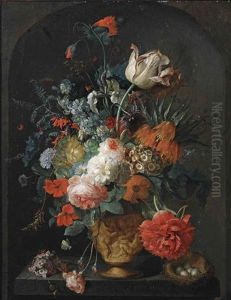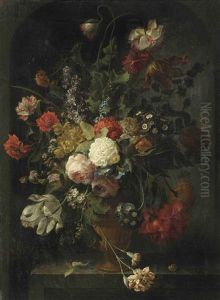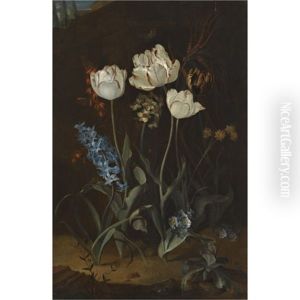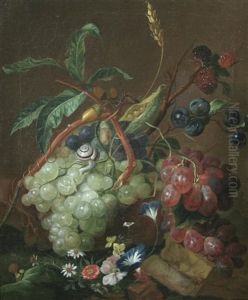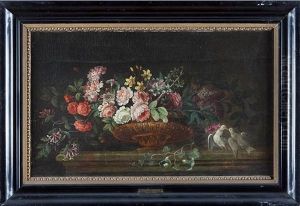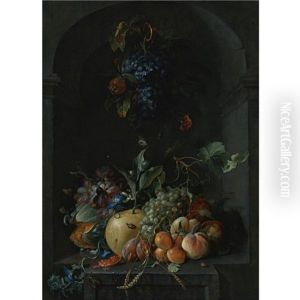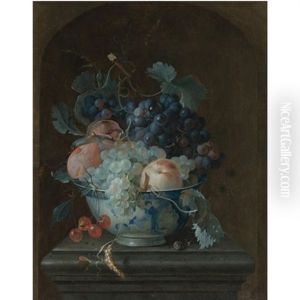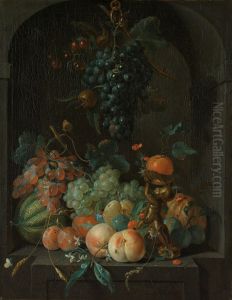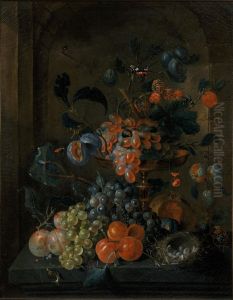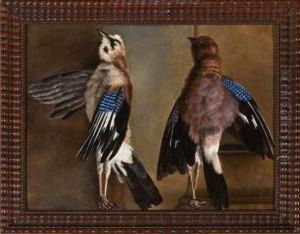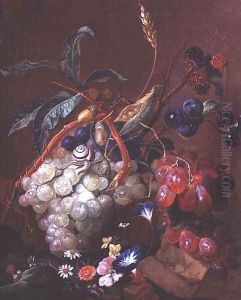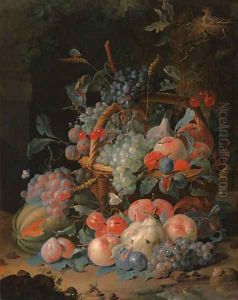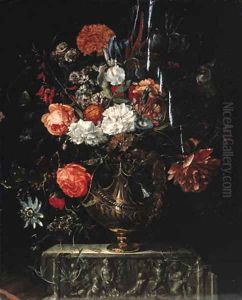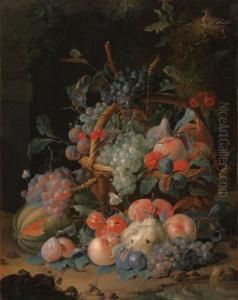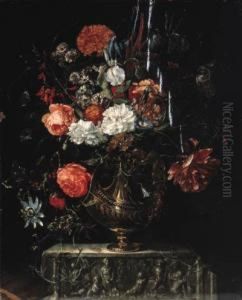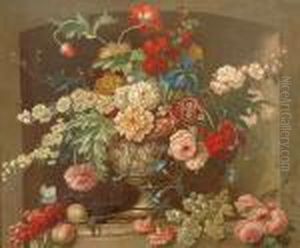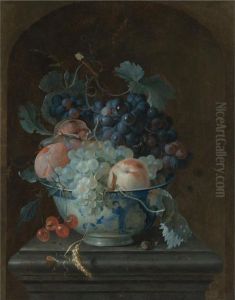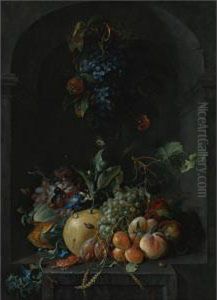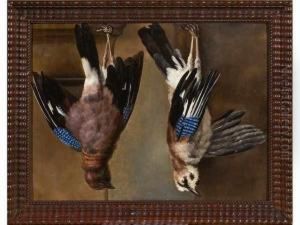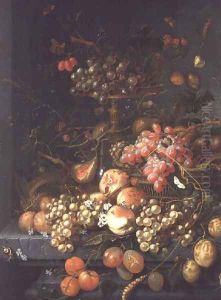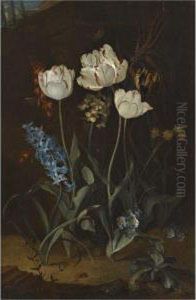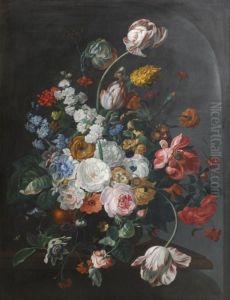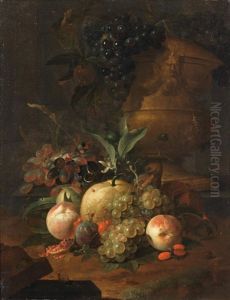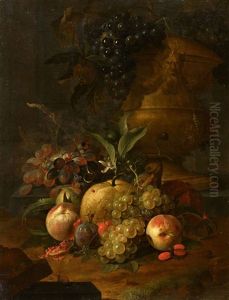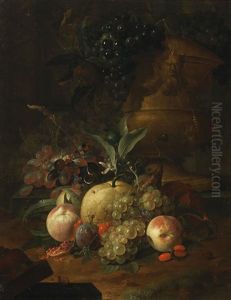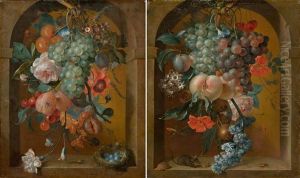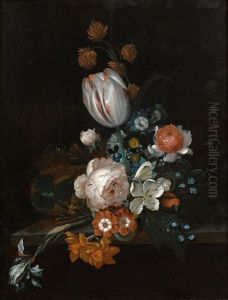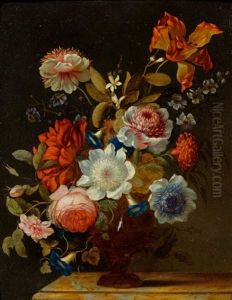Coenraet Roepel Paintings
Coenraet Roepel, born in The Hague in 1678, was a distinguished Dutch Golden Age painter renowned for his still life paintings. His work is emblematic of the Baroque period, characterized by its attention to detail, vibrant colors, and dynamic compositions. Roepel's artistic journey commenced under the tutelage of his father, who was also an artist, laying the foundation for his future accomplishments in the world of art.
Roepel's oeuvre primarily consists of floral still lifes, a genre that was immensely popular in the 17th and 18th centuries. He had an exceptional ability to depict flowers with astonishing realism and vitality, which earned him considerable acclaim during his lifetime. His paintings often featured an array of flowers in elaborately arranged bouquets, placed in ornate vases, and set against a dark background to enhance their luminosity and color contrast.
In addition to his floral works, Roepel also explored other still life themes, including fruit pieces and vanitas paintings. These works reflected the transience of life and the inevitability of death, common themes in Baroque art intended to remind viewers of their mortality and the fleeting nature of earthly pleasures.
Roepel's talent was recognized beyond the borders of his homeland. He attracted a sophisticated clientele that included aristocrats and members of the European elite, further cementing his reputation as one of the leading still life painters of his time. Despite the high demand for his paintings and the recognition he received, detailed records of his life and career remain somewhat scarce, leaving aspects of his personal life and artistic development shrouded in mystery.
Coenraet Roepel passed away in The Hague in 1748. Today, his works are preserved in several major museums around the world, where they continue to captivate audiences with their beauty and technical mastery. Roepel's legacy endures as a testament to the enduring appeal of still life painting and its ability to convey complex themes through the depiction of ordinary objects.
